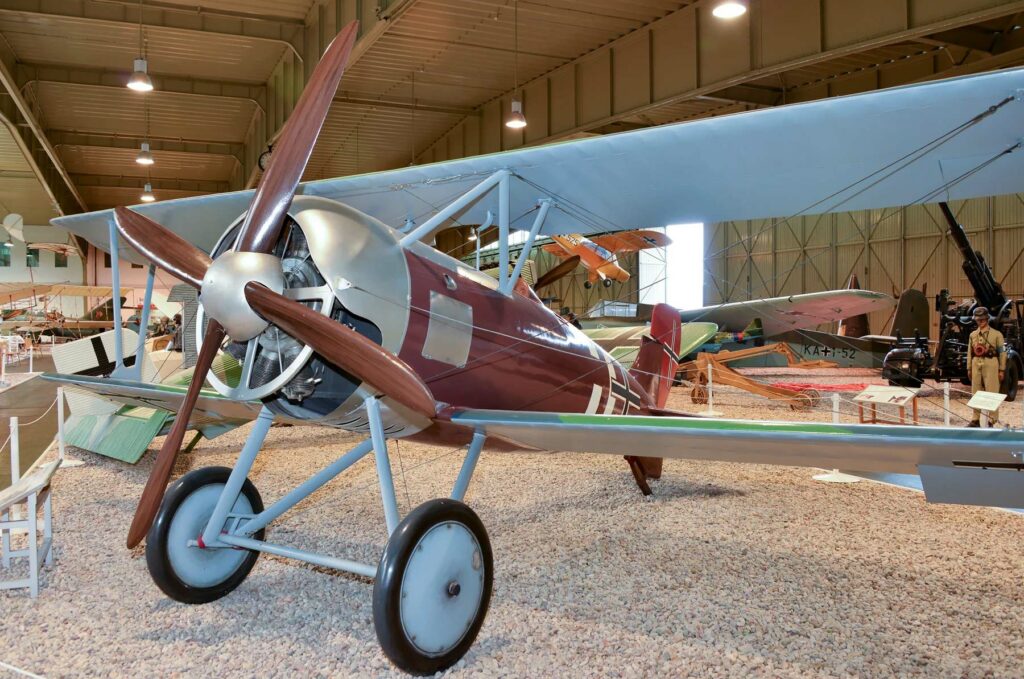Siemens-Schuckert D.IV: Agile WWI German biplane fighter, renowned for its climb rate and exceptional service at high altitudes. The Siemens-Schuckert D.IV stands out as one of World War I’s most notable German fighter aircraft, prized for its high-altitude performance and rapid climb capability. Its design and operation reflect the intense aerial combat of its time and Germany’s efforts to gain air superiority during the latter part of the war.
In the era of World War I, aerial combat was a rapidly evolving facet of military strategy. The Siemens-Schuckert D.IV was developed as part of this evolution, with a focus on countering the allied air forces’ increasing effectiveness. This article explores the aircraft’s development, design, performance, and military use.
History of the Development of the Siemens-Schuckert D.IV
The Siemens-Schuckert D.IV was a product of necessity, innovation, and the intense air war of the late World War I period. With the air battles shifting to higher altitudes and the Allied forces improving their aircraft, Germany needed a competitive answer to maintain air superiority. Siemens-Schuckert Werke, already a prominent electrical engineering company, was one of the manufacturers to step into the aviation foray, tasked with developing a high-altitude fighter.
Launched by the German Empire, the development program aimed to create a fighter with rapid climb ability, excellent maneuverability, and the potential to dominate at higher altitudes than most contemporary aircraft. The D.IV’s design was rooted in the earlier D.III model, which had shown promise with its rotary engine. The Siemens-Schuckert D.IV first flew in late 1917, showcasing its advanced capabilities and suggesting its potential effectiveness in combat.
Design of the Siemens-Schuckert D.IV
The Siemens-Schuckert D.IV was an advanced single-seat biplane fighter with a wingspan of 27 feet 6 inches (8.38 meters) and a length of 19 feet 8 inches (5.99 meters). This compact size contributed to its agility. The aircraft featured a streamlined semi-monocoque fuselage built from wood and covered in plywood, which was innovative for its time and provided a relatively light but strong structure.
A significant design feature of the D.IV was its Siemens-Halske Sh.III bi-rotary engine. This 160 hp (119 kW) engine was capable of maintaining power at higher altitudes due to its supercharger-like blower, which was a unique feature among World War I fighters. However, this complex engine required frequent maintenance, which was a notable drawback.
The D.IV brought advancements in aerodynamics and structural design to the German air force. The implementation of a leading-edge slat, a first for fighters, allowed for better low-speed control, which was beneficial in dogfights and takeoffs from rough fields.

Performance of the Siemens-Schuckert D.IV
The Siemens-Schuckert D.IV’s performance was impressive, especially in climb rate, where it could reach 5,000 meters (16,404 feet) in 29 minutes. This was superior to many of its contemporaries, such as the famed Fokker Dr.I, which it outperformed at altitude.
With a top speed of 120 mph (193 km/h), it wasn’t the fastest aircraft of the era, but its climb rate and high-altitude capabilities were where it truly excelled. The aircraft had a service ceiling of approximately 26,250 feet (8,000 meters), allowing it to intercept enemy reconnaissance aircraft and bombers operating at high altitudes.
Military Use and Combat of the Siemens-Schuckert D.IV
The Siemens-Schuckert D.IV’s armament typically consisted of two Spandau LMG 08/15 machine guns, which were synchronized to fire through the propeller arc. This standard armament made it a formidable opponent in the dogfights characteristic of the period.
The D.IV saw action primarily on the Western Front in 1918 and quickly earned a reputation as a formidable dogfighter at high altitudes. It competed with Allied aircraft such as the Sopwith Camel and the SE5a, often besting them in terms of climb rate and high-altitude performance. Despite its superiority at altitude, the D.IV was produced too late and in too few numbers to significantly impact the course of the war.
The aircraft was not sold to other countries, and its use was limited to the German air force. After the war, the Treaty of Versailles restricted Germany from maintaining an air force, leading to the discontinuation of the D.IV and many other military aircraft.
The Siemens-Schuckert D.IV was a notable aircraft that exemplified the technological advancements and strategic necessities of late World War I aerial combat. Its climb rate and high-altitude performance were remarkable for the time, showcasing Germany’s engineering prowess. Although its operational history was brief and its numbers limited, the D.IV made a lasting impression on military aviation and served as a testament to the ingenuity of its designers in an era of rapid technological development.
Back to the Warbirds section.